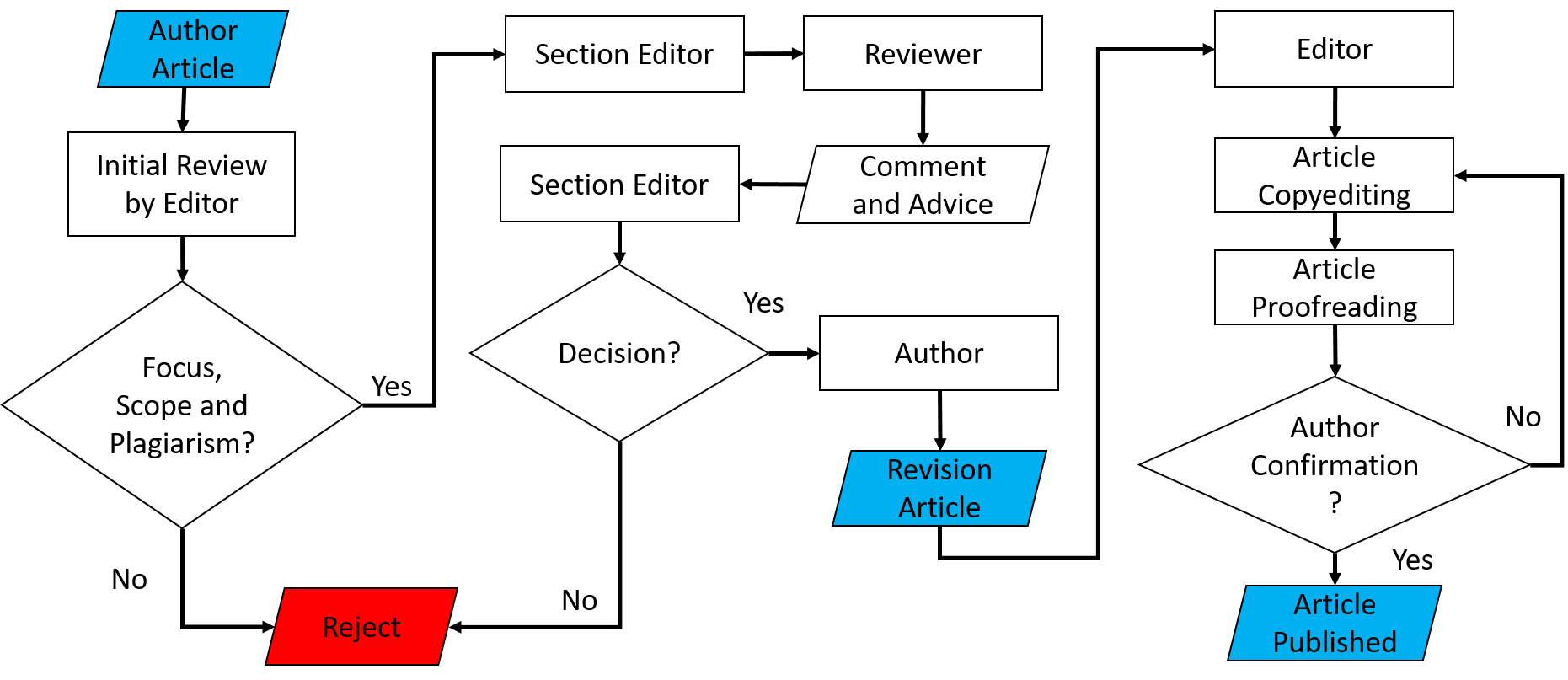Peer Review Process
This journal uses double-blind peer review, which means that the reviewers won’t get to know the identity of the author(s), and the author(s) won’t get to know the reviewer's identity. The idea is that everyone should get a similar and unbiased review.
Reviewers’ Responsibilities
(COPE Ethical Guidelines for Peer Reviewers)
If ETHICA’s Editor has invited you to review a manuscript, please consider the following items:
- Reviewing manuscript critically but constructively and preparing detailed comments about the manuscript to help authors improve their research;
- Reviewing multiple versions of a manuscript as necessary;
- Providing all required information within established deadlines;
- Making recommendations to the editor regarding the suitability of the manuscript for publication in the journal;
- Declaring to the editor any potential conflicts of interest concerning the authors or the content of a manuscript they are asked to review;
- Reporting possible research misconducts;
- Suggesting alternative reviewers in case they cannot review the manuscript for any reasons;
- Treating the manuscript as a confidential document;
- Not making any use of the work described in the manuscript;
- Not communicating directly with authors if somehow they identify the authors;
- Not identifying themselves as authors;
- Not passing on the assigned manuscript to another reviewer;
- Ensuring that the manuscript is of high quality and original research;
- Informing the editor if he/she finds the assigned manuscript is under consideration in any other publication to his/her knowledge;
- Writing a review report in English only;
- Authoring a commentary for publication related to the reviewed manuscript.
What should be checked while reviewing a manuscript?
- Novelty;
- Originality;
- Scientific reliability;
- A valuable contribution to science;
- Adding new aspects to the existing field of study;
- Ethical aspects;
- Structure of the article submitted and its relevance to authors’ guidelines;
- References provided to substantiate the content;
- Grammar, punctuation, and spelling;
- Scientific misconduct.
The detailed peer-review process can be seen in Figure 1.
Editors first review the submitted manuscript. It will be evaluated whether it is suitable for the International Journal of Robotics and Control Systems (ETHICA) focus and scope or has a major methodological flaw and similarity score by using the turnitin. The decision is accepted or rejected for the review process. The manuscript will be sent to at least three anonymous reviewers (Double Blind Review), which means that the reviewers of the paper won’t get to know the identity of the author(s), and the author(s) won’t get to know the identity of the reviewer. The idea is that everyone should get a similar and unbiased review. Reviewers' comments and suggested decisions are then sent to the editor. The editors will evaluate the reviewer's comments and a suggested decision. Afterward, the editor will send the final decision to the corresponding author for necessary actions and responses. The decision is accepted, revised, or rejected.

Figure 1. Peer review process

Figure 1. Peer review process


